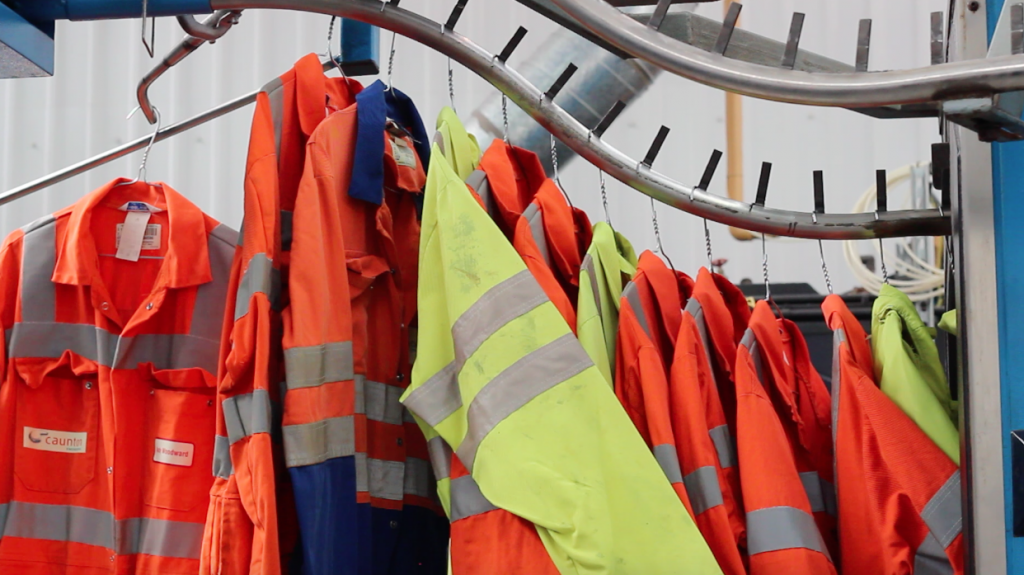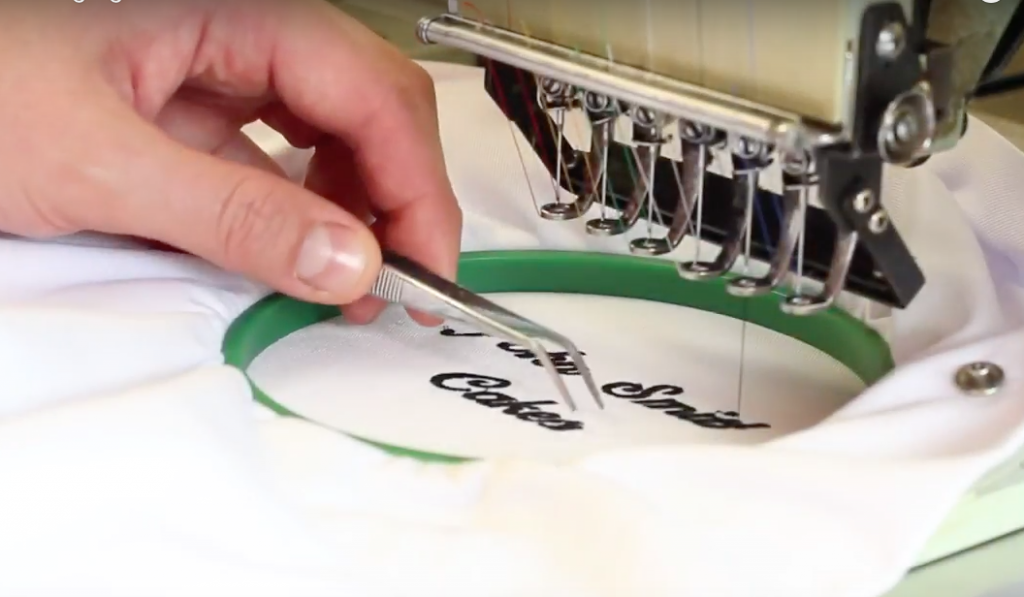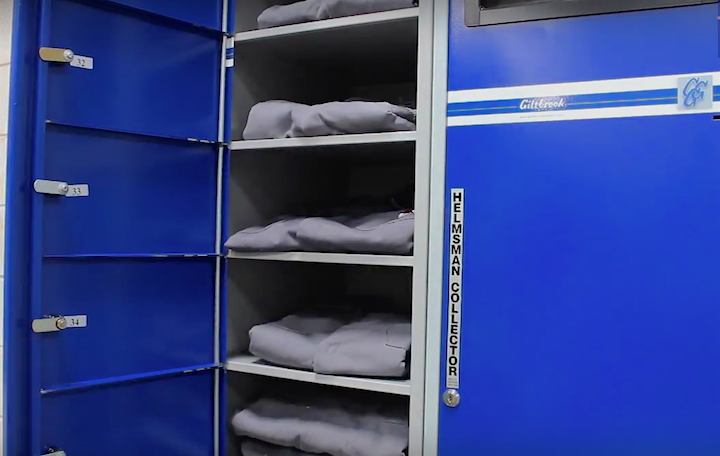Hi-Vis Clothing Requirements & Information
All you need to know about what hi-vis clothing is required for different industries and the standards it must conform to.
All you need to know about what hi-vis clothing is required for different industries and the standards it must conform to.
Hi-vis workwear is a key requirement in industries where work occurs:
The primary function of high visibility clothing is to distinguish the wearer from the background, with the results being that they are clearly visible from all angles. This prevents accidents occurring in a potentially dangerous situation.
As hi-vis plays such a significant role in the safety of workers in high risk situations, it important that all garments (including coveralls, vests, jacket and trousers and poloshirts) are certificated to EN ISO 20471.
All new high visibility garments must be certificated to EN 20471 safety standards. The EN 20471 standard covers
It's important to ensure your staff are supplied with the correct PPE equipment but it is equally important that it is worn correctly.
High visibility clothing is ideal for workers that are
Cyclists and motorcyclists may also choose to wear high visibility clothing to make them safer and more visible when riding on the public highways.
High visibility garments are very good at alerting people of your presence. Wearing high visibility clothing is ideal when working with moving vehicles such as forklift trucks in a warehouse to make you more visible and alert the driver of your presence.
Your business’ health and safety policy will identify if any high visibility requirements are needed for your business.
It is your employer’s duty to provide adequate and serviceable equipment for you to wear and use in the workplace. The garments need to be comfortable and may require keeping the wearer warm if working outside for example. Some garments that are available are finished with a water repellent finish to help you keep dry in wet weather.
High visibility clothing must be worn in any areas of your site that displays a mandatory sign instructing you to do so. Carrying out a risk assessment is the employer’s responsibility to determine if there is a requirement to wear any high visibility clothing.
Choosing the most suitable high visibility garment for your needs is based on several factors these include but are not limited to, the lighting conditions that the wearer is working in including artificial and ambient lighting and weather factors such as rain or foggy conditions.
PPE must be suitable for an individual’s working needs. The garments supplied by the employer must fit the wearer correctly. If a garment is loose fitting it might snag or cause entanglement on moving machinery.
The colour and fabric weight of the garments being worn must be considered and the ability of the wearer to move and work freely. The garments issued must also be comfortable for the wearer.
If more than 2 garments are being worn at the same time under no circumstances should they interfere with each other in any way.
High visibility garments need to be maintained in a clean state and in good working order. Damaged or ill-fitting garments will not protect you properly. Remember the more soiled and dirtier the high visibility garment becomes the less effective it will be.

The appropriate number of garments to issue to an employee will be dependent on a number of factors. It can be sometimes difficult to get the right balance; balancing the cost of investment in garments, expected life of garment, frequency of changes, and access to laundry & repair services.
Workers themselves may be carrying out a varying number of types of jobs, in different weather conditions at different times of year. If a set becomes dirty or wet, and the hi-visibility fabric and tape becomes masked through soiling, this can lead to the garment not complying and potentially putting the wearer at risk.
Offering the wearer time for cleaning and to carry out any garment renovation with the help of professional seamstress will increase the life of the garment. It is far better to carry out regular repairs on the garment in a timely manner to ensure conformity to EN 20471 standards.
We would recommend an open discussion with the laundry provider, to discuss the challenges and the turnaround times of the washing and repair service. These are all considerations you will have to think about when deciding how much safetywear is appropriate.
There are 3 classes of high visibility clothing, they are class 1,2 and 3. Please see table below for minimum of visible material in m2 required to conform to each class. It is possible to combine two high visibility garments that conform to EN 20471 safety standards and you can achieve a class 3 certification for a whole set. E.g. class 2 high visibility vest and class 2 high visibility trouser, combine to make a class 3 ensemble.
| Class 1 | Class 2 | Class 3 | |
| Fluorescent Material (m2) | 0.14 | 0.50 | 0.80 |
| Retroreflective tape (m2) | 0.10 | 0.13 | 0.20 |
There are two criteria that must be met to ensure that the garment meets EN 20471 standards.
The first criteria are that the fabric must be made of either fluorescent yellow, fluorescent orange or fluorescent red in colour and cover a bare minimum of 0.14m2.
The second criteria required is that a minimum of 0.10m2 of retro reflective tape is present on the garment.
Alterations to trouser or sleeve length will reduce the amount of fluorescent material present, so you need to bear this in mind when choosing a garment.
No high visibility trousers should be tucked into footwear as this also would reduce the visibility of fluorescent material or retroreflective tape.
No high visibility garments should be covered by any garment that is not of EN 20471 standard as the garments worn underneath are no longer visible. This means that the wearer will become less visible and the risk of an accident would be considerably higher.
Retro reflective tape should not be removed from any garment that is of high visibility. Removal could make the garment no longer conform to the necessary standard EN 20471.
The choice of which colour you should use, will depend on the environment the person is wearing the high visibility clothing. Orange is mainly used in the construction industry and on railways. Hi Visibility clothing standard RIS-3279-TOM (previously GO/RT 3279). Yellow tends to be used by the Highways and Emergency services.
How conspicuous a person is wearing a hi-vis garment refers to the ability of the wearer to stand out over other objects around them. This is important in complex environments such as construction workers working on the road or emergency services responder attending a road traffic accident or lone maintenance workers working on the railway line. The level of visibility of the wearer will be a combination of observer recognition of uniform along with the level of contrast of the uniform. Mixing combination of fluorescent Orange or Yellow against dark fabrics in the one garment, creates a sharp contrast against the background.
The recommendations would be to follow the standard guidelines in the sector you are working within. At the same time asking the question based on the environment, and what colour offers the greatest recognition and contrast colour for the best overall visibility and therefore protection.

CALL US TODAY ON 0115 944 8464 OR EMAIL US

We offer flexible rental contracts and outright purchase options for all of our workwear. Read our comparison to find out the best option for you.

Add your logo and branding to your garments for a professional business look.

Floor mats are an important addition to any business. From keeping staff and customers safe, the work environment clean, and an opportunity to create a great first impression, the benefits speak for themselves.

We can provide locker facilities for your staff. Available in a variety of styles, sizes and colours to suit all needs.